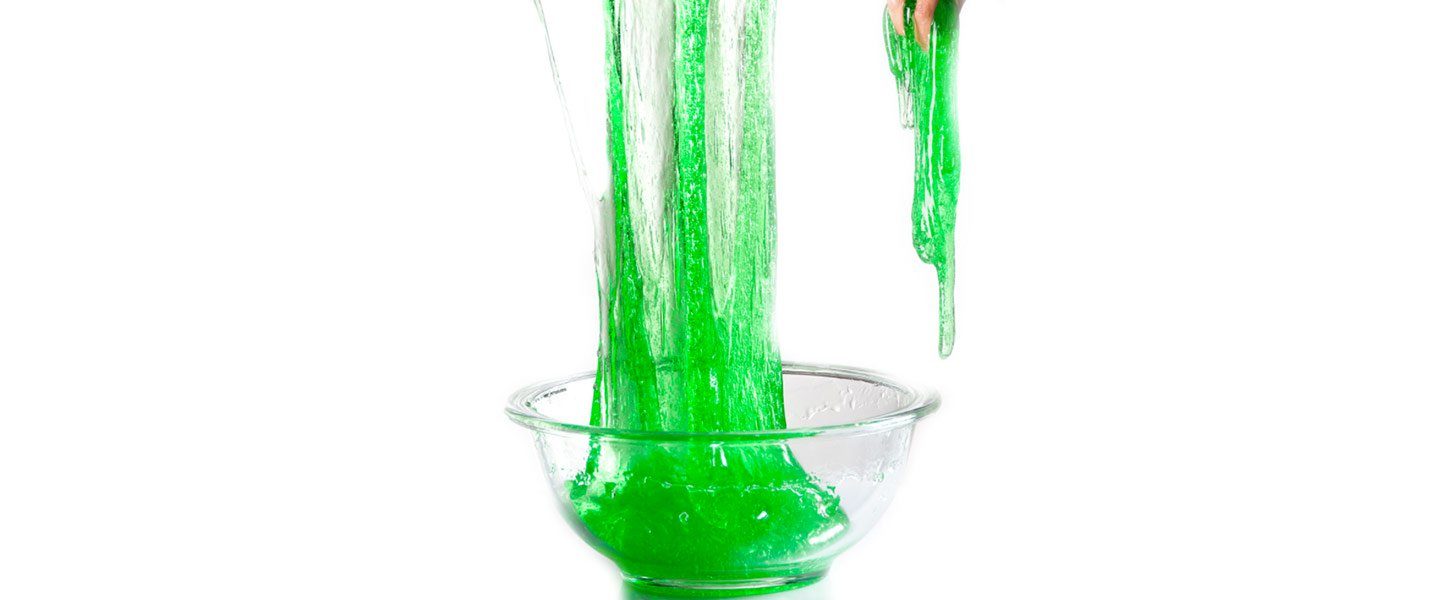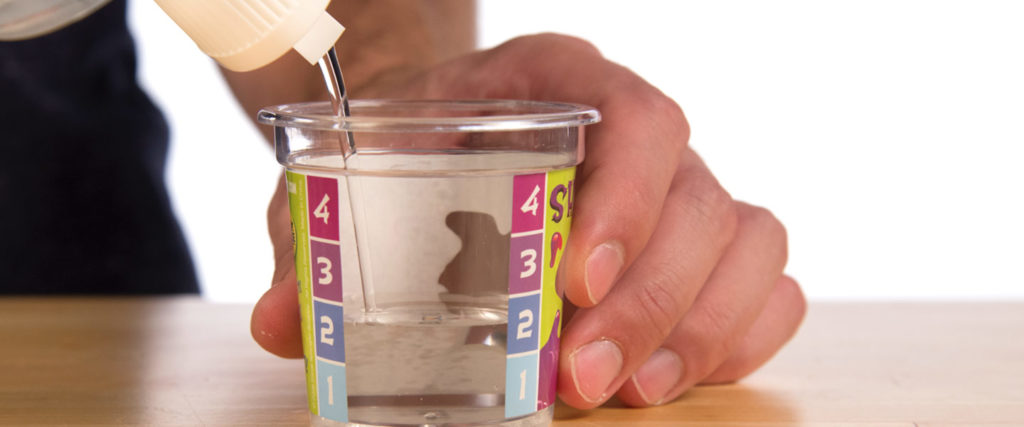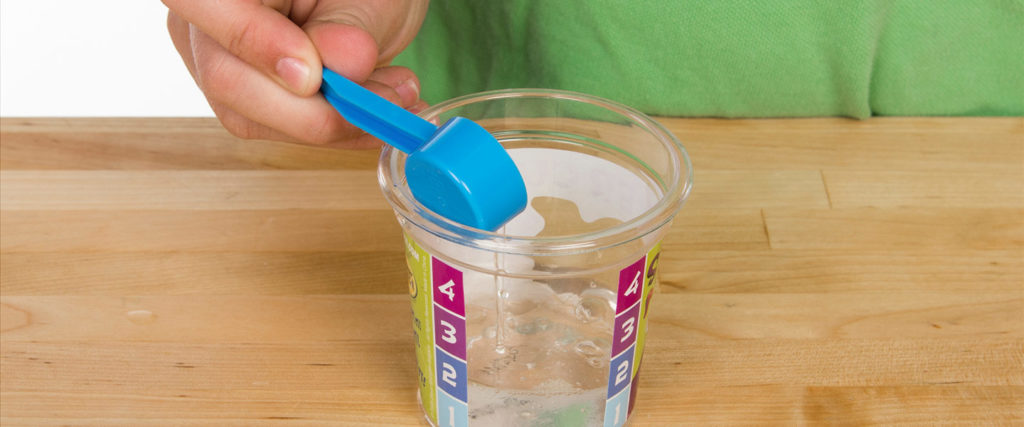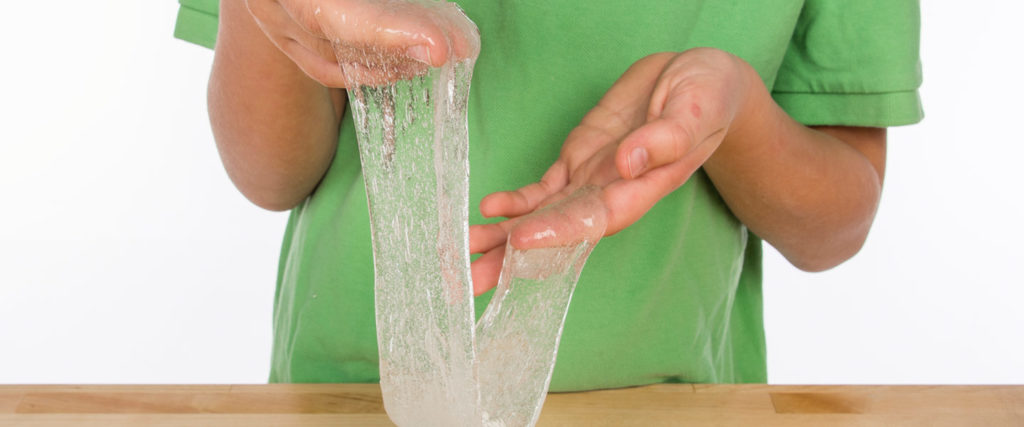How to Make Slime - Elmer's Glue Recipes
Expert slime makers agree that Elmer’s glue makes the best DIY slime. However, there are some tricky variations that can turn your slime from just […]

It’s one of our most frequently asked questions… How do you make real slime? Ask any special effects artist about slime and you’re sure to hear the term polyvinyl alcohol (PVA). Combining polyvinyl alcohol with a Borax solution creates the best slime in the world. Slime is an unforgettable experience that lends itself to any classroom and any age student. As you do the “Year End Review” with your students and revisit the incredible lessons and stimulating discussions you carefully planned and executed, they’ll remember the day the slime was discovered in the principal’s office.
This slime recipe requires a 4% solution of polyvinyl alcohol (PVA) and sodium tetraborate (that’s Borax).
Slime made with PVA is often referred to as commercial or “professional” slime. This is the type that is generally found in toy stores. Slime made with PVA is far superior to slime made with ordinary Elmer’s glue. If you start with clear PVA solution, you can make any variation you want.

Measure 2 ounces (60 mL) of PVA into a plastic cup.

Add 1 ounce (30 mL) of the Borax cross-linker solution and stir. After several minutes of stirring, all of the PVA should be stuck together in one large clump on the stirring stick. There you have it … slime! It’s that simple.

The slime can be stored in a zipper-lock bag for safekeeping. Clean up is easy if you have water and paper towels for slimy hands and for surfaces that have been “accidentally” slimed. When you’re finished, you can just throw the slime and materials into the trash. Or, you could toss the slime back into the zipper-lock bag and send it home with your young scientist.
Because you mixed two liquids together, there’s a good chance that slime is a colloid, and it is! But, there’s more to it than that, and your kids need to understand how the molecules behave in order to grasp it all. For starters, most liquids, such as water, are made up of small, unconnected molecules bouncing around and tumbling over and into one another. Single molecules are called monomers. Monomer liquids flow easily and are seldom gooey or sticky to the touch. In other substances, the monomers are linked together in identical, repetitive segments that form long chains of molecules known as polymers. These long chains don’t flow over and across one another very easily. Like a bowl of cooked spaghetti, they sort of roll over and around one another but they’re not linked to each other. Liquid polymers tend to be gooier and flow more slowly than liquid monomers. The PVA used in this activity is a liquid polymer.
You might use this analogy to help the kids understand what happened. Picture a box full of tiny, steel chains that slip and slide easily across one another. Each chain is made up of hundreds of individual links but one chain is not connected to another chain. If you reach in and grab one chain and pull it out, that’s what you get: one chain. Suppose you stir a whole bunch of tiny magnets into the box of chains. The magnets randomly connect the chains together in many locations, making a single, large blob of chains. Now if you reach in and grab one chain, you’ll lift out the entire pile.
Adding Borax solution to the PVA does pretty much the same thing (only it’s a chemical, not a magnetic, connection). Borax loves to connect with water and billions of Borax molecules randomly link trillions of water molecules found anywhere on the chains of PVA. Now when you pull out one PVA chain, all the rest come with it in a blob. In the chemical reaction that the kids made, they got a slow-moving, glistening mass that’s known as a hydrogen-bonded, cross-linked polymer gel (slime is way easier to say).
In an effort to understand the world around them, scientists design models of what they can’t see in order to understand and explain what they can see. The idea is to figure out how various molecules inside materials are arranged to produce the observable results. In general, molecules can be “seen” only with some serious electronic help and these images serve only to assist with the inferences of the model. If your kids understand how this inference modeling works, then they’re way ahead of the game in their understanding of molecules.
Okay, there is one last secret. The slime from the toy store has a shiny almost metallic-like appearance. How do they do that? The secret is a material called Pearl Swirl which contains an ingredient called titanium dioxide. Just a little squirt of Pearl Swirl in the PVA solution and you’ll have cracked the code to making the perfect batch of slime!
Learn how to turn this simple slime into spooky stuff with these Halloween Slime Recipes.
What is PVA (polyvinyl alcohol) used for anyway? PVA is used by the plastics industry to form surface coatings and to make surface films resistant to gasoline. It’s also used to make artificial sponges, hoses, and printing inks. Also, if you look at the ingredients of contact lens wetting solutions, you may find this stuff as a lubricant and a cleanser. The PVA solution in this kit contains coloring and a special disinfectant to help resist pesky germs on those not-so-clean hands.
The Borax solution is used in the wood industry to protect against fungus and to make new wood look old. It’s also used to solder metals, to glaze and enamel pottery, to whiten your wash, and serves as an excellent soap in the medical industry. The students can add more Borax to achieve a firmer slime, but there is a point of diminishing returns before the slime breaks down and turns back into a liquid.